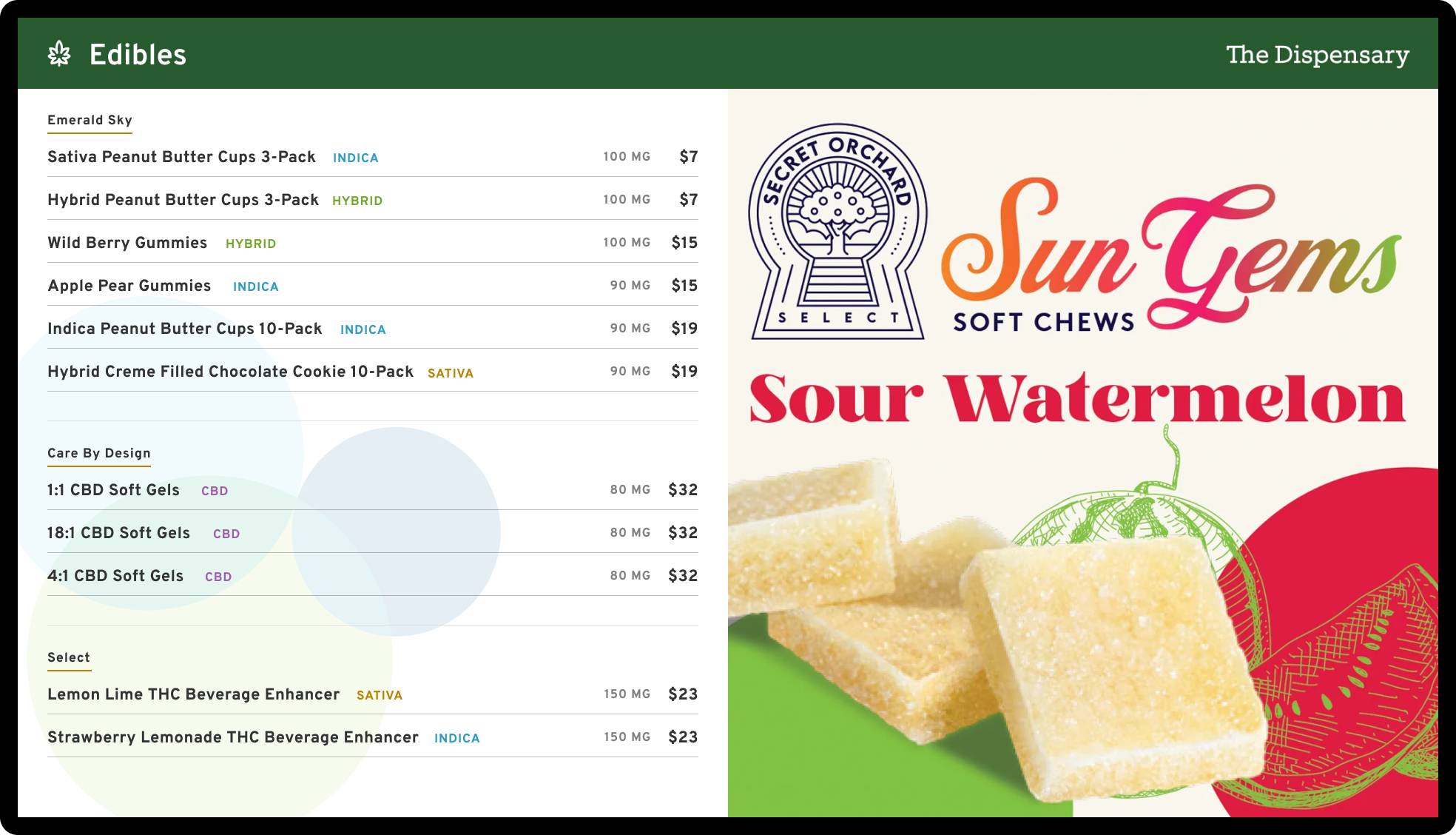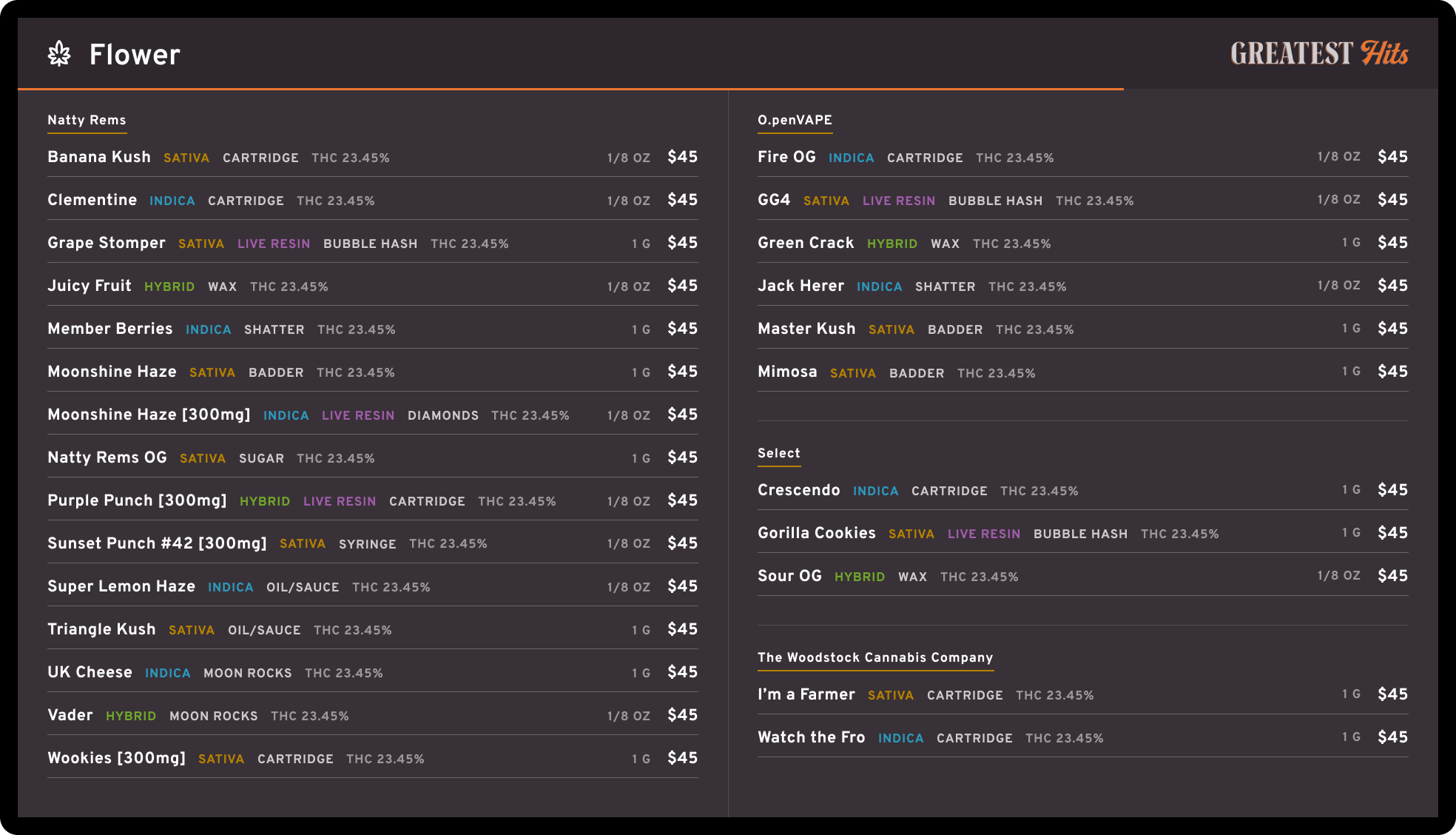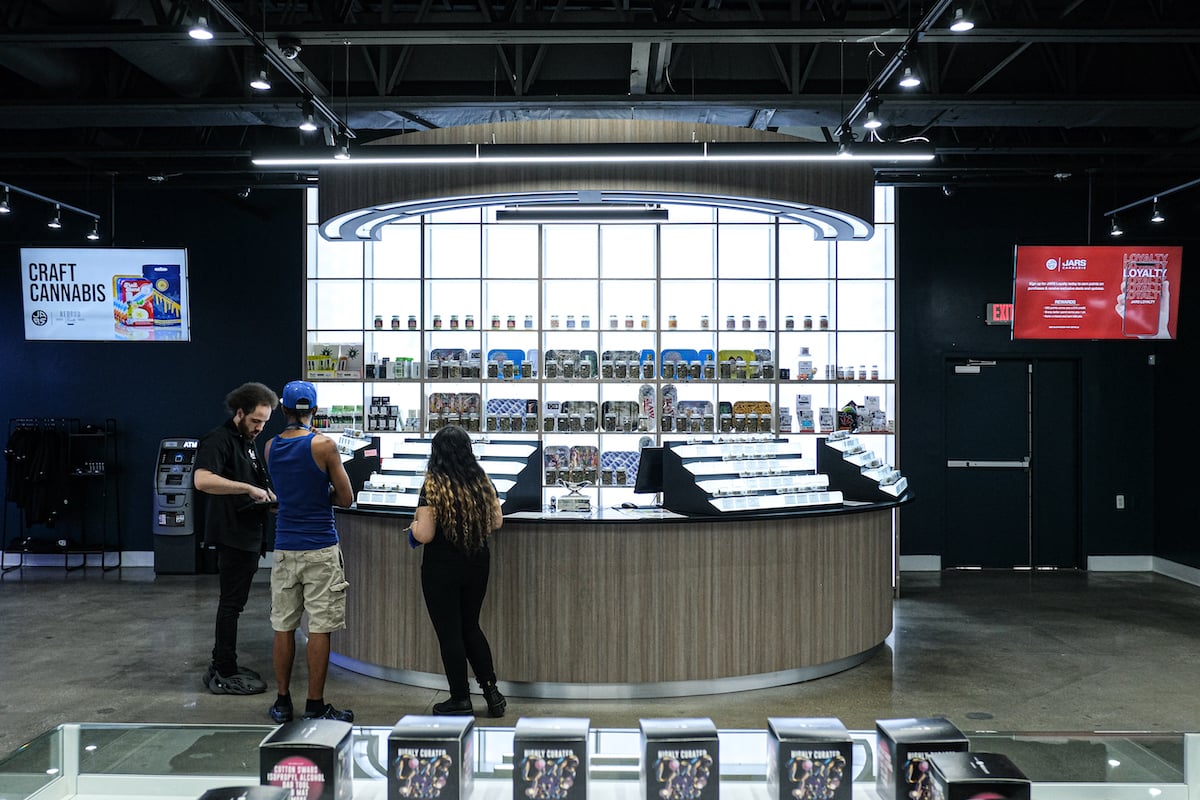Seed TV Menu: How Does It Work?
Learn exactly how Seed TV Menus work to display your dispensary’s product menu and promotional images, videos, or gifs.
Do you really need TV menus in your dispensary? It depends! See the arguments for and against TV menus to help make your own decision.
Seems simple, but if you visit many dispensaries, you know that TV menus aren’t in all of them. That begs the question: Do you need TV menus in your dispensary?
Generally we believe the answer is yes, but more realistically, it depends!
Some dispensary owners think TV menus are vital; others think they are an unnecessary cost. In this post, we’ll explore a few of the arguments around whether or not you need dispensary TV menus.
Cost is one of the first things people consider, and rightfully so in an industry with high cost of entry and tax burdens. Let’s break it down a bit.
Now that you know what types of expenses you’ll have related to TV menus, let’s talk about the cost of not having an automated system.
For dispensaries without digital or TV menus, the common alternative is printed menus, or creating Google Slides and using thumb-drives to get the designs onto TVs. Sounds easy, but this is actually a costly and time-consuming option:
And finally, the third consideration around cost. With TV menus, you can make money. One way is that having beautifully-designed screens helps inform customers. If they know about new products, daily deals, upcoming events, etc., you can influence their shopping behaviors and create loyalty, which means bigger basket sizes and return visits. That equals revenue.
The other way is by selling screen time. You can “sell” ad space to your brand partners to offset the cost of the service. Competition amongst brands is intense, and many are willing to pay for prominent shelf space, co-branded marketing, and/or placing graphics on your TVs.

To summarize, TV menus do come with a cost, but they can also make you money, save you time, and ultimately help your bottom line.
Where your cannabis business is located probably isn’t something you considered, but relates to whether you need TV menus.
We have noticed that newer markets consider TV menus and feature boards as a needs-to-have. They’re building screens into their store designs from inception. They’re even prioritizing self-service – something more mature markets are slow to adopt.
What gives? One explanation is that new markets are pushing the boundaries of design. They’ve had the benefit of watching other states and get to open their own stores with a strong sense of what they like or don’t like. In new markets it’s all about high-end fixtures, lighting, and beautiful color palettes. Of course integrated technology is going to fit into that.
So when you’re thinking about whether you need dispensary TV menus, look around at your competitors. Are they using screens? How are they using them? This could be your opportunity to level the playing field (and even stand out if you can do digital better).
Most of the factors about whether you need TV menus is about you, the business. But a huge component to consider is your customers and what they want.
How do dispensary shoppers prefer to see product menus?
We recently surveyed cannabis consumers and found that people prefer a variety of menu options, with TV menus being the top of the preferred list.
They also like interactive options, tablets, and some do like printed menus. 10% said no menu was necessary (probably because they already know what they want or are visiting that store already knowing the menu). The point is: don’t assume you know what your customers want.

We’ve been in the digital signage game for a long time and understand the value of TV menus on customer experience. Here’s a few things to consider:
Some dispensaries are very small, and carry a limited product mix. In this case, you can inform shoppers about available products in other ways. It may not be easier or cheaper, but with few products, printed or hand-written menus could work.
On the flip-side, any store carrying a broad selection of cannabis products cannot be successful without an automated menu (be it on tablets or TVs). There would be no way for customers to know what you carry. Education and providing information would be difficult. And that means products go unnoticed (and ultimately wasted).

What about online menus? Yes, many customers will browse your online menu before coming into the store, but we recommend still having digital menus in-store to create a consistent experience and further support their shopping experience. It’s also important that both online and in-store menus are using the same integration so they display the same products.
Store size – and resulting product mix – was already discussed, but another element of dispensary design is vibe or aesthetic. You could argue that TVs would complete with or impact your style.
For example, if your dispensary was designed like a spa, with a tranquil water feature, calming tones, and instrumental music, you may not want to mount big-screens all over.
However, today’s digital signage software allows you to customize your screens to whatever design, colors, fonts, and transitions you want. The key would be to hang them in the appropriate place, with the right design, and keep the screens to a minimum. Another option would be to use hand-held tablet menus instead.
Dispensary owners/operators often tell us that TVs are a necessity and enhance the store design, not take away from it. Think of screens as part of your design, and plan the location and designs accordingly.

TV menus are a great way to add sophistication to your dispensary design, plus they allow you to communicate effectively with shoppers.
But do you need TV menus in your cannabis retail store?
– Consider the cost (both for the tech/software and the time and resource costs of not automating your menus)
– Consider your location (what’s the norm in your state and can you do it even better to set yourself apart from the competition?)
– Consider your customer experience (how do you want customers to feel and behave in your store, plus how do they want to shop?)
– Consider your products (the more SKUs you carry, the more necessary automated menus become)
– Consider your aesthetic (what’s the vibe of your store and how can screens enhance that experience?)
There is a strong case for having TV menus in your store, but ultimately, there are valid reasons to use other menu types (like printed) or opt for no menus at all.
At the end of the day, the choice is up to you and the cannabis business you want to create, but don’t let the decision be just about cost.
Learn exactly how Seed TV Menus work to display your dispensary’s product menu and promotional images, videos, or gifs.
TV menus are valuable real estate. We break down the pros and cons of ads on your dispensary digital signage.
Dispensary paper menus are expensive, time-consuming, and risky. Learn 8 reasons to quit printing menus at your cannabis retail store.
Schedule a demo to see how Seed Technology can help you achieve your retail goals
LEARN MORE